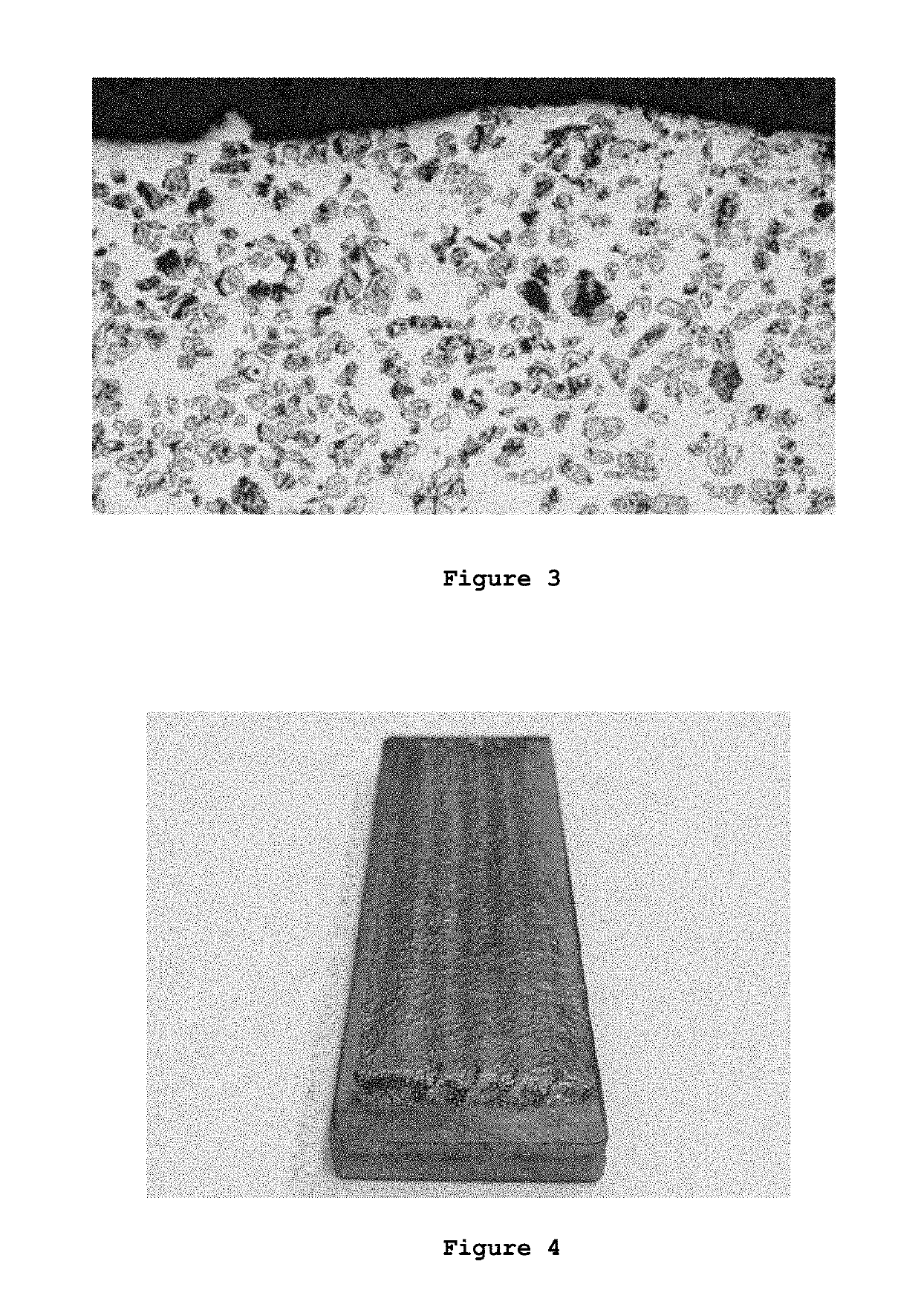Wear resistant coating
a technology of wear resistance and coating, applied in the direction of heat inorganic powder coating, tubular articles, plasma welding apparatus, etc., can solve the problems of affecting efficiency, periodic shutdowns are required to replace worn parts, and considerable abrasion, so as to reduce the susceptibility of galling, the effect of reducing the susceptibility of the wear resistant coating and reducing the hardness of the matrix
- Summary
- Abstract
- Description
- Claims
- Application Information
AI Technical Summary
Benefits of technology
Problems solved by technology
Method used
Image
Examples
Embodiment Construction
[0053]The description that follows is in the context of applying a wear resistant coating to a substrate of titanium alloy. It is important to appreciate, however, that the wear resistant coating may be applied to other materials that can be directly welded with titanium and other alloys by use of a suitable butter layer.
[0054]An apparatus 1 for forming a wear resistant coating on a substrate 10 is shown in FIG. 5.
[0055]The apparatus 1 comprises a spray nozzle 20 having an elongate body. The spray nozzle 20 includes a laser generator 22 that generates a laser 40. The laser generator 22 is aligned along a central longitudinal axis of the elongate body. A sleeve surrounds the laser generator 22 to form an annular feed flow chamber 24.
[0056]The laser generator is linked to a power source 26 to generate the laser 40 with sufficient energy to melt small particles of titanium in the range of 20 to 170 μm. The chamber 24 is linked via a conduit to a reservoir 28 of feed particles for formi...
PUM
| Property | Measurement | Unit |
|---|---|---|
| temperatures | aaaaa | aaaaa |
| pressure | aaaaa | aaaaa |
| temperature | aaaaa | aaaaa |
Abstract
Description
Claims
Application Information
 Login to View More
Login to View More - R&D
- Intellectual Property
- Life Sciences
- Materials
- Tech Scout
- Unparalleled Data Quality
- Higher Quality Content
- 60% Fewer Hallucinations
Browse by: Latest US Patents, China's latest patents, Technical Efficacy Thesaurus, Application Domain, Technology Topic, Popular Technical Reports.
© 2025 PatSnap. All rights reserved.Legal|Privacy policy|Modern Slavery Act Transparency Statement|Sitemap|About US| Contact US: help@patsnap.com



